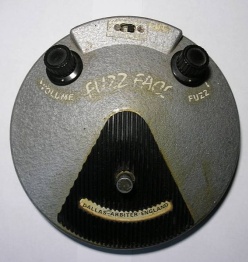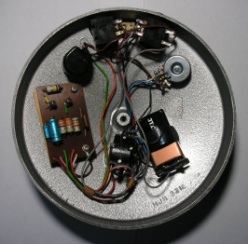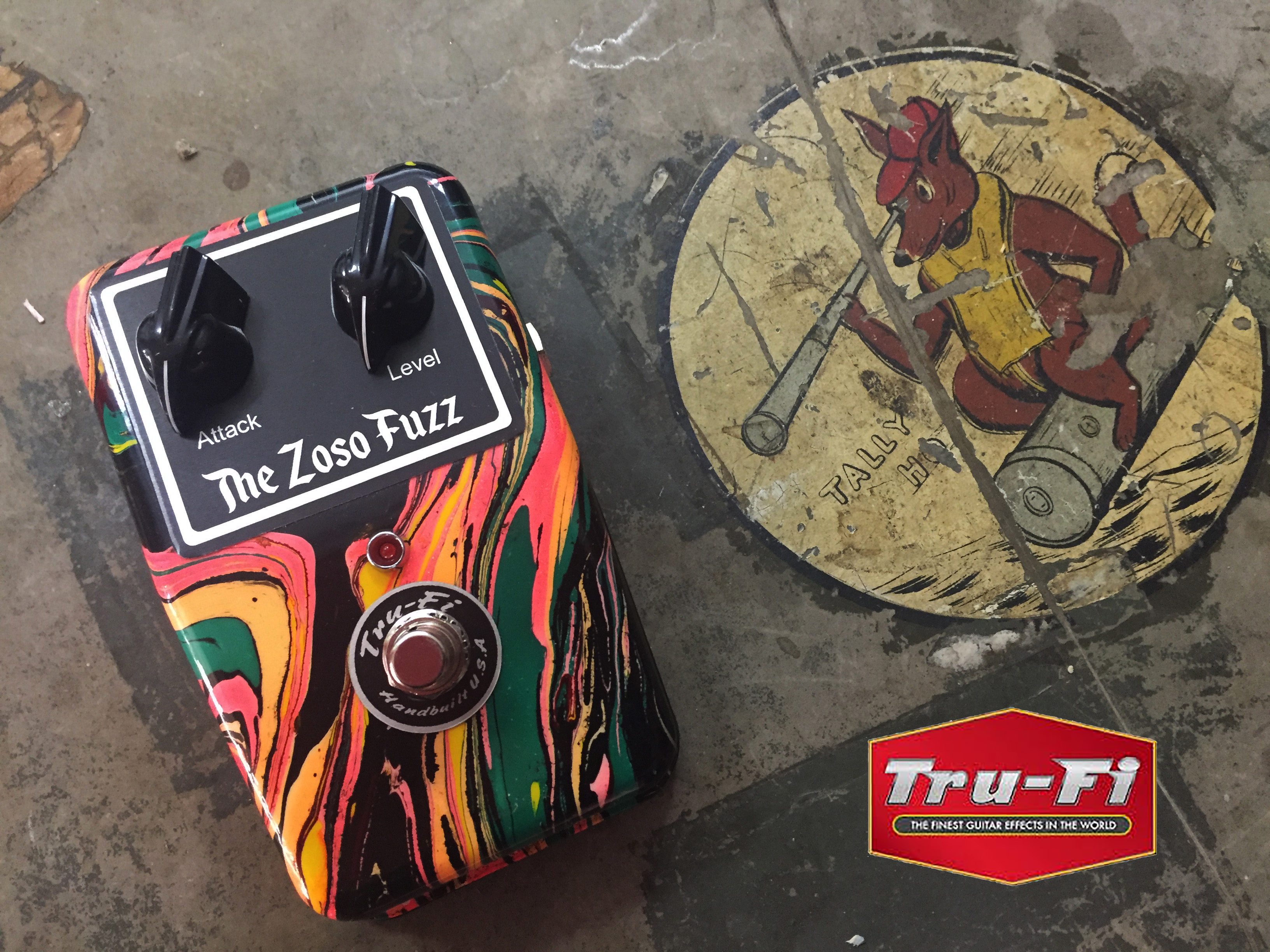What is Fuzz ? - reprint from Gibson Guitars
The oldest and most dearest guitar pedal tone is the Fuzz pedal, it was the perfect sound for the times and has endurred tone for over 50 years. Other than the old cranked amp or faulty preamp channel, these are the grandaddies of distortion devices. Fuzzes were also among the first of the transistorized guitar effects being built back in the early 1960s—which is no surprise when you discover the simplicity of most of them. It’s almost pointless to describe the sound of a vintage-style fuzz tone more than the name already does. They slather a slightly wooly, rounded, warm but sparkly distortion all over the guitar signal (see, you could just say “fuzzy”) to give more meat, girth, and sustain to the sound. More imposing units can be guilty of taking charge of the entire signal and bending it to their own synthetic demands—“brick-wall processing,” as Hendrix-approved effects builder Roger Mayer puts it himself (meaning your signal hits that wall and cannot pass through without a total transformation of its nature and character)—while those which many consider to be the more playable devices retain elements of your dynamics, touch, feel, and core tonality. In the case of “brick wall” type fuzzes, the resultant sound is still, usually, more processed and artificial than any of the preceding types of pedals in this category. The more dynamic fuzz pedals, however, are great for working with you and preserving the critical elements of your touch and tone. Turn a tube amp up to where it’s starting to break up and you’ve got gentle overdrive; crank it to the max and you’ve got heavy distortion. Pull out one of the pair of output tubes, use the wrong-value bias resistor on a preamp tube, or beat it senseless with a crowbar and you might just get it to sound like fuzz. It’s not a natural sound, but it can be a great one, and it’s a major part of many players’ signature tones. If the fuzz is the grandaddy, the Arbiter/England Fuzz Face (introduced 1966) is the grand-poobah of the grandaddies’ social club. A handful of other fuzzes came first, but this distinctive round, smiling box is the one most guitarists point to when identifying the fuzz tone of the gods. Why? Two words: Jimi Hendrix. Apparently he died and took it up there with him. Oh, and two other words: germanium transistors. When these fuzz fans point to the Fuzz Face, however, they don’t point to just any Fuzz Face. They point to a good one. The quality of these pedals varies wildly, mainly because the tolerances of germanium transistors themselves varies wildly and sorting out the good ones was more work than the makers could afford to put in (or, perhaps, knew was necessary). Contemporary makers from Fulltone to Z.Vex to Mayer take the time and trouble to laboriously sort their germanium transistors, and it pays in spades in terms of tone and consistency.
If the fuzz is the grandaddy, the Arbiter/England Fuzz Face (introduced 1966) is the grand-poobah of the grandaddies’ social club. A handful of other fuzzes came first, but this distinctive round, smiling box is the one most guitarists point to when identifying the fuzz tone of the gods. Why? Two words: Jimi Hendrix. Apparently he died and took it up there with him. Oh, and two other words: germanium transistors. When these fuzz fans point to the Fuzz Face, however, they don’t point to just any Fuzz Face. They point to a good one. The quality of these pedals varies wildly, mainly because the tolerances of germanium transistors themselves varies wildly and sorting out the good ones was more work than the makers could afford to put in (or, perhaps, knew was necessary). Contemporary makers from Fulltone to Z.Vex to Mayer take the time and trouble to laboriously sort their germanium transistors, and it pays in spades in terms of tone and consistency.
Many readers will already know that germanium has been the effects buzzword of the past many years. These transistors are considered softer, rounder, more musical. Don’t be fooled: that doesn’t mean they make music all by themselves, you have to make music through them. But that’s not such a bad thing.  Open up a Fuzz Face for the first time and you’re likely to be startled by its simplicity, and other early fuzzes like Maestro’s Fuzz-Tone (1963) and Sola Sound’s Tone Bender (1965) are equally basic. As far as the Face goes, you’ll find fewer than ten components on the board, two of them being those crucial AC128 or NKT275 transistors. Interestingly, the Tone Bender originally used two OC75 germanium transistors made by Mullard, the revered British tube manufacturer.
Open up a Fuzz Face for the first time and you’re likely to be startled by its simplicity, and other early fuzzes like Maestro’s Fuzz-Tone (1963) and Sola Sound’s Tone Bender (1965) are equally basic. As far as the Face goes, you’ll find fewer than ten components on the board, two of them being those crucial AC128 or NKT275 transistors. Interestingly, the Tone Bender originally used two OC75 germanium transistors made by Mullard, the revered British tube manufacturer.
Later makes of fuzzes—and later generations of those above—moved on to silicon transistors. Many players found the silicon-based models a little harsher sounding, however, and the legend of the magical germanium transistors began to grow. Even so, plenty of guitarists get along just fine with the silicon variety. Eric Johnson, often credited with ears of canine keenness, has used a silicon-transistor Dallas-Arbiter Fuzz Face to drive the dirty rhythm of his famous multi-amped, multi-routed set-up. He also holds the unit together with a rubber band because he says the bottom plate’s central mounting screw affects its tone. Make of this what you will.
High-end builders of today have gone back to germanium en masse for their classic fuzz tones, and most of them test their transistors to sort out the few that will do the job correctly. They put them in anything from vintage-style units—like Tru-Fi fuzz Pedals

